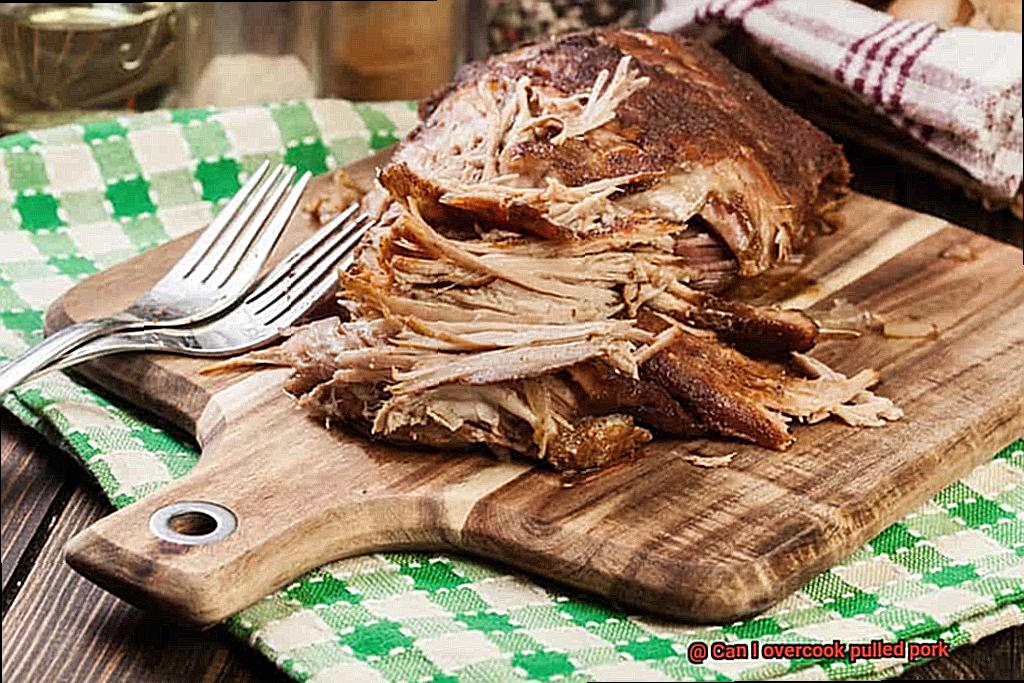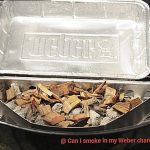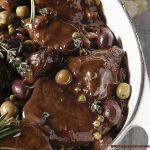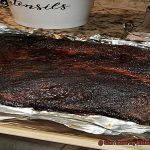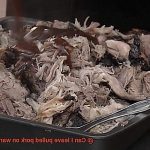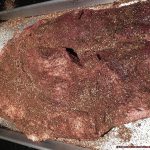Picture this: the air thick with the tantalizing aroma of slow-cooked, succulent pulled pork. It’s a scene that has graced backyard barbecues, family gatherings, and food trucks alike. But in the sizzling world of culinary delights, questions inevitably arise. And one question that often sends pitmasters into a frenzy is this: Can I overcook pulled pork?
Now, let me set the stage here. I’m no stranger to the smoky symphony of perfectly cooked meats. As a seasoned enthusiast who’s spent countless hours perfecting the art of barbecue, I’ve witnessed tough cuts transform into melt-in-your-mouth shredded pork. But just like any great pursuit, it comes with responsibilities. And when it comes to your prized pork, understanding the boundaries of perfection is key.
So come on this flavor-packed adventure with me as we dive into this saucy query and uncover the secrets behind achieving pulled pork nirvana without tipping over into a dry disaster. Together, we’ll walk that fine line between irresistible tenderness and unfortunate overcooked oblivion.
Get ready to sharpen your tongs and don your aprons because we’re about to embark on a journey that will leave your taste buds begging for more. Let’s unravel the mysteries of overcooking in the tantalizing world of pulled pork and ensure you never miss the mark on this culinary masterpiece again.
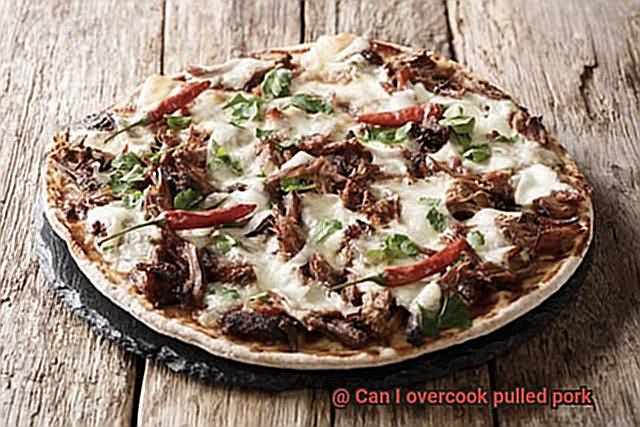
Are you ready? Let’s fire up those grills and get ready to create pulled pork perfection.
Contents
The Ideal Temperature for Pulled Pork
Pulled pork is the crown jewel of barbecue, a succulent and flavorful dish that can be enjoyed in a variety of ways. But what is the secret to achieving that tender, melt-in-your-mouth texture? The answer lies in cooking the pork at the ideal temperature. In this comprehensive guide, we will explore the science behind achieving the perfect pulled pork and share expert tips and techniques to help you master this culinary delight.
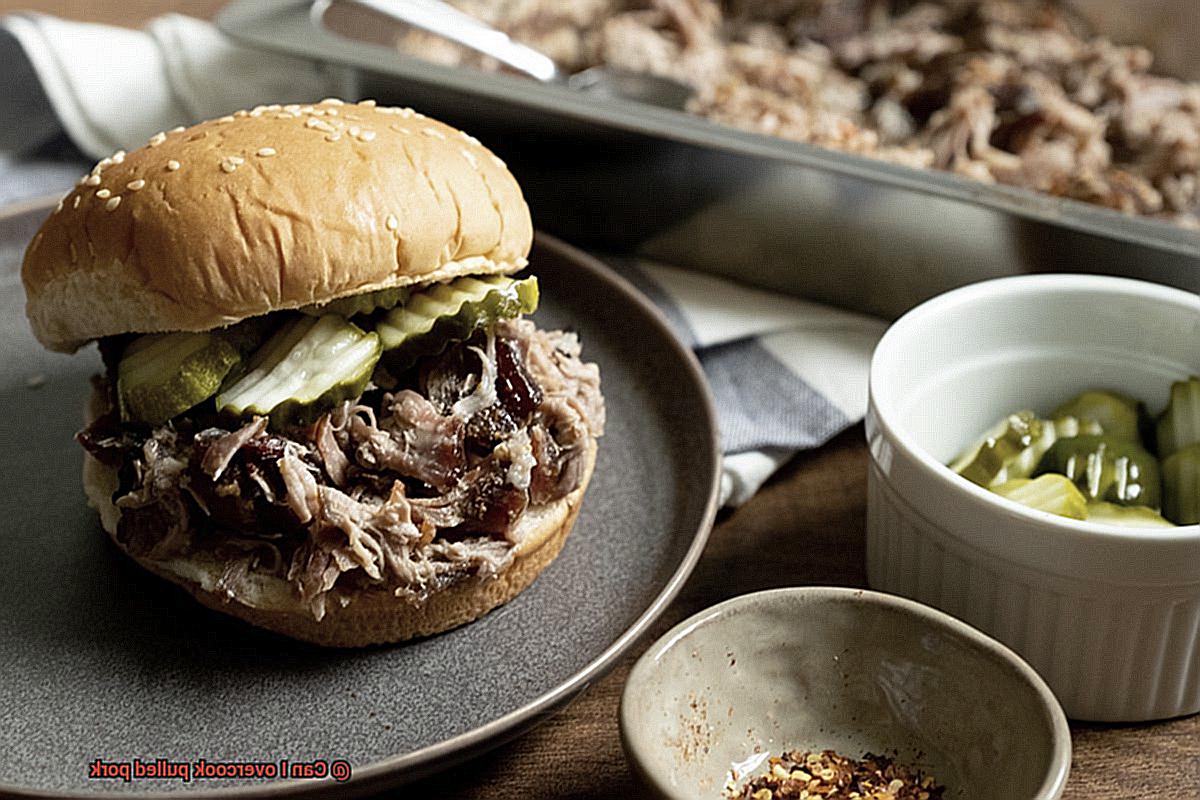
The Ideal Temperature:
The key to achieving tender pulled pork lies in reaching the ideal internal temperature of 195°F to 205°F (90°C to 96°C). At this range, the collagen in the meat breaks down, transforming tough, sinewy muscle fibers into tender strands that easily pull apart. To ensure accuracy, it is crucial to use a meat thermometer to monitor the pork’s internal temperature.
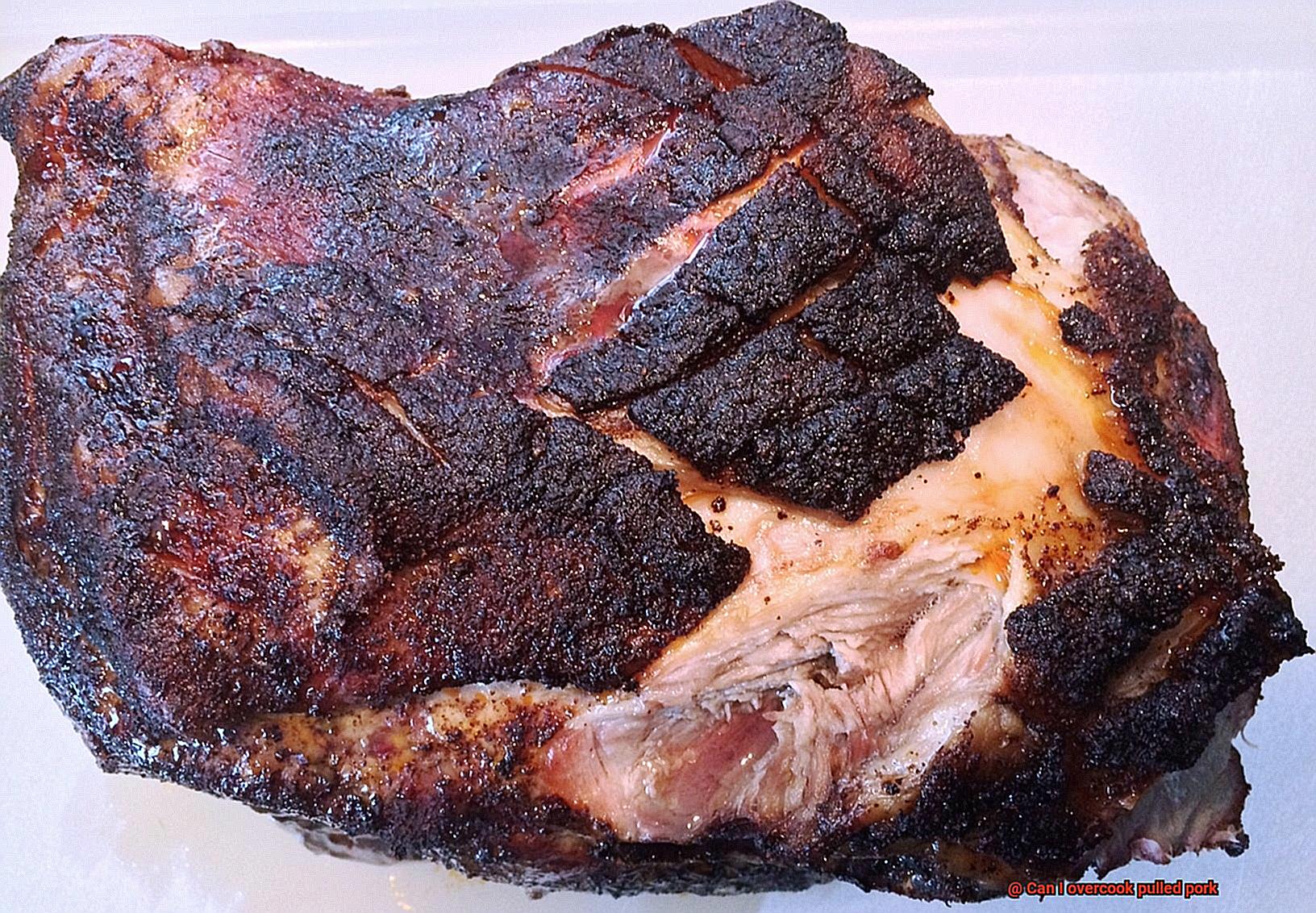
Cooking Techniques:
- Slow Cooking: One popular method for achieving tender pulled pork is slow cooking. This can be accomplished through smoking or barbecuing at low temperatures. Aim for a cooking temperature of around 225°F (107°C), allowing the pork to cook slowly over several hours. This gradual process maximizes collagen breakdown and enhances flavor development.
- Low and Slow: Some pitmasters prefer cooking pulled pork at slightly lower temperatures, around 200°F (93°C), for an extended period. This technique allows for even more collagen breakdown, resulting in an unbelievably tender and flavorful end product.
Monitoring Temperature:
Throughout the cooking process, diligently monitor the internal temperature using a reliable meat thermometer. Different cuts and cooking methods may require adjustments to cooking times. By keeping a close eye on the temperature, you can avoid undercooking or overcooking the pork, ensuring perfect results every time.
Resting Period:
Once you’ve achieved the ideal internal temperature, remove the pork from heat and allow it to rest for 15-30 minutes. This resting period is crucial as it allows the meat to reabsorb its juices, resulting in a more flavorful and juicy end product.
Avoiding Overcooking:
Overcooking pulled pork is a cardinal sin that can leave you with dry, tough meat. Avoid this pitfall by carefully planning your cooking time, using the correct temperature and cooking method, and diligently monitoring the internal temperature. Practice and experience will help you achieve the perfect level of doneness.
Factors That Can Contribute to Overcooking
Grilling aficionados know that achieving the perfect pulled pork is no easy feat. It requires finesse, precision, and a keen understanding of the factors that can contribute to overcooking. In this article, we will delve into the seven culprits that can sabotage your pulled pork dreams and provide expert tips to ensure your meat is succulent and flavorful.
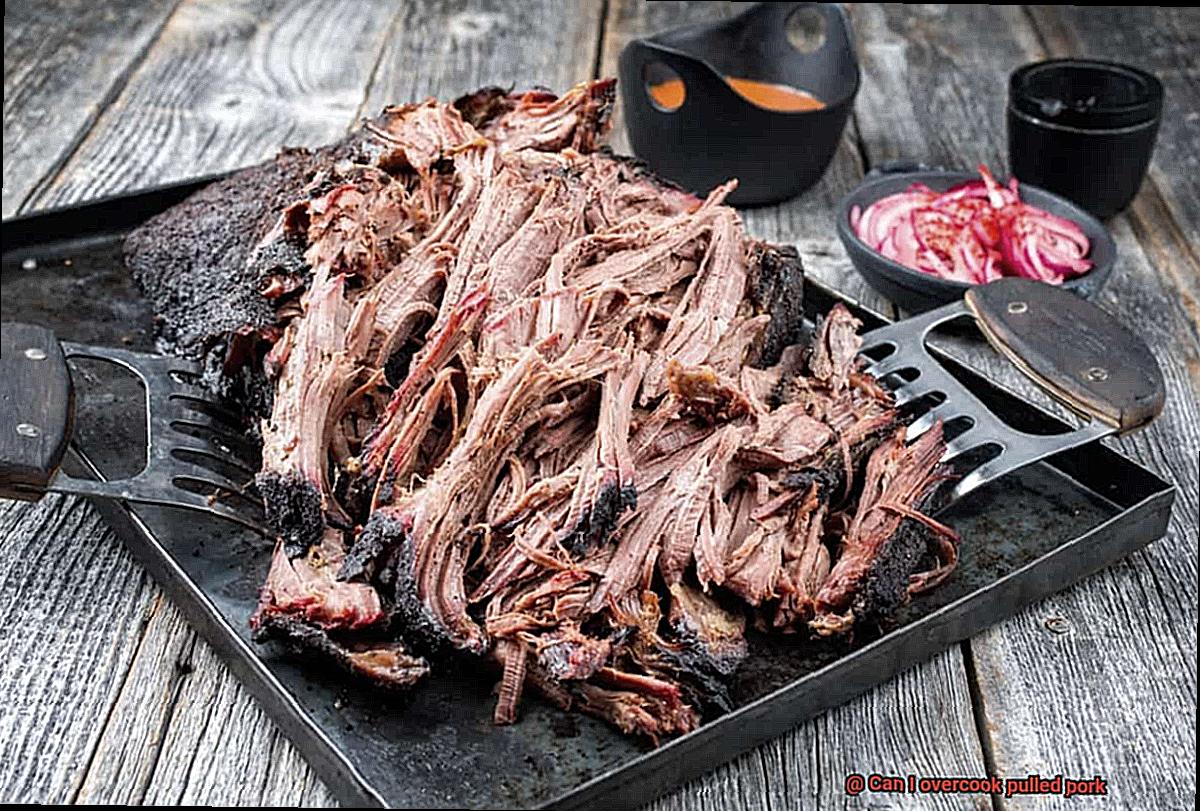
The Fiery Temptress: Cooking Temperature
The siren call of high heat can lead to disaster. A scorching grill can cause your pork to cook too quickly, resulting in a dry and tough catastrophe. Conversely, a low temperature can leave you with meat that never quite reaches that desired level of tenderness. Find the Goldilocks zone on your grill or smoker for pulled pork nirvana.
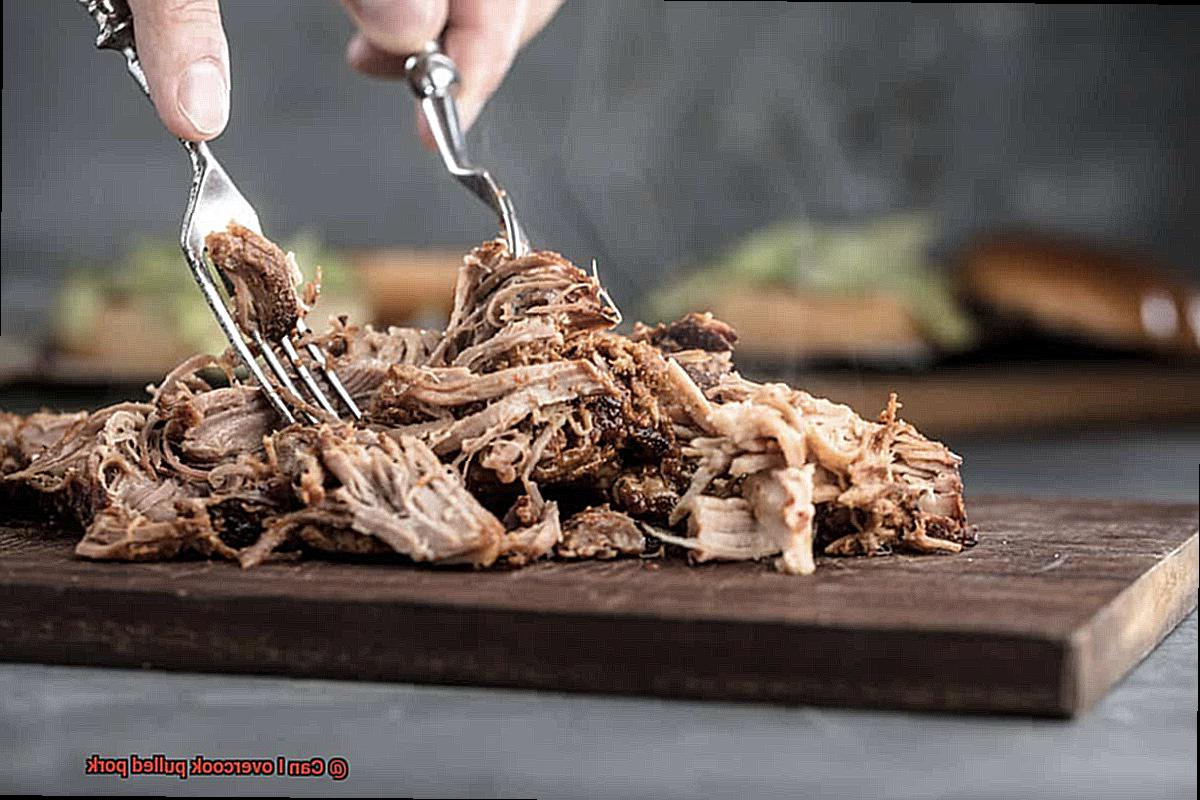
The Ticking Clock: Cooking Time
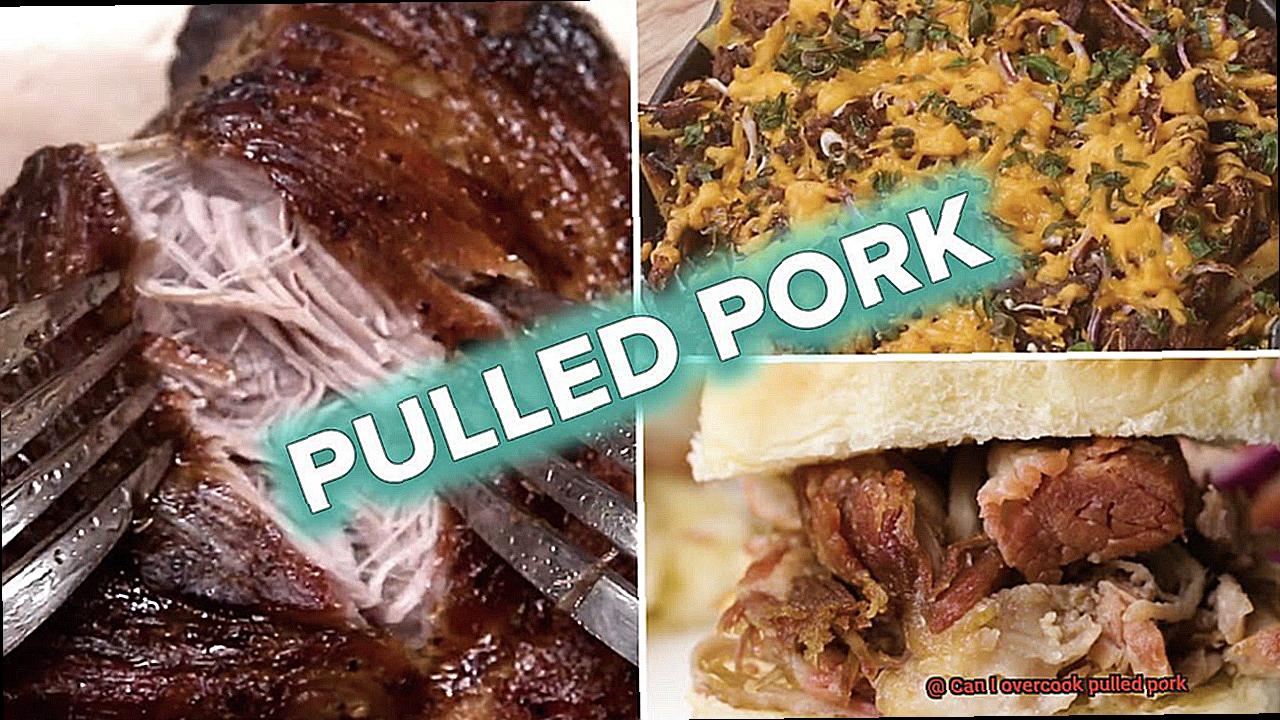
Time is of the essence, but too much of it can spell doom for your pork. Overcooking occurs when the meat is left on the heat for too long, transforming it into a sad, stringy mess. Keep a watchful eye on the clock and remove your pork from its fiery abode when it reaches its ideal internal temperature.
The Meaty Behemoth: Thickness Matters
Beware the thick-cut beast. Thicker pieces of pork require more time to cook through, increasing the risk of overcooking if not handled with care. Consider the size and thickness of your meat when devising your cooking strategy. Utilize a trusty meat thermometer to ensure that the thickest part of your pork reaches its recommended internal temperature.
The Oasis of Rest: Resting Time
Resting is essential for unlocking maximum tenderness and flavor in your pulled pork masterpiece. However, tread lightly in this oasis of rest, as excessive lounging can lead to continued internal cooking and the dreaded overcooking. Aim for a brief respite of 10-15 minutes to allow the juices to redistribute without sacrificing texture.
The Heat Whisperer: Type of Cooking Equipment
Every grill and smoker possesses its own peculiarities, a unique dance of heat distribution. Some may harbor hotter spots than others, clandestinely plotting your meat’s demise. Know thy equipment and adjust your cooking times and temperatures accordingly. Unleash your inner heat whisperer and experiment with different zones to achieve consistent results.
The Sentinel’s Neglect: Lack of Monitoring
Do not fall victim to the sentinel’s neglect. Negligently abandoning your post can result in overcooked pulled pork. Keep a vigilant eye on the temperature and cooking time, preventing the meat from languishing on the grill or smoker for an eternity. Arm yourself with a reliable meat thermometer, frequently checking the internal temperature to ensure culinary triumph.
The Butcher’s Secret: Quality of Meat
The quality of your chosen pork can make or break your cooking endeavor. Tough cuts or excessive fat may demand extended cooking times for tenderness to emerge. However, crossing the threshold of necessity can lead to overcooking and ultimate dryness. Select high-quality cuts of pork, minimizing the risk of culinary catastrophe and guaranteeing a delectable outcome.
Signs of Overcooked Pulled Pork
Attention, grill masters. Today, we embark on a quest to uncover the signs of overcooked pulled pork—a culinary catastrophe that can turn your dreams of mouthwatering deliciousness into a dry and disappointing nightmare. So, grab your tongs and join me as we explore the treacherous territory of grilling gone wrong.
Dry and Tough Texture – It’s a Disaster.
Imagine sinking your teeth into what should be succulent pulled pork, only to find yourself in a Sahara desert of tasteless chewiness. An overcooked pork loses its natural juices, resulting in a dry, tough texture that lacks the tender goodness you crave. Say goodbye to melt-in-your-mouth satisfaction.
Lack of Flavor – Where Did It Go?
Prepare yourself for a flavorless abyss. Overcooking can strip away the flavors that make pulled pork so irresistible. The prolonged heat exposure diminishes the natural sweetness and richness, leaving your taste buds longing for more. Don’t let your BBQ dreams go up in smoke.
Charred or Burnt Exterior – The Searing Sign
Ah, the smell of charred perfection…or is it? When pork is cooked for too long or at high temperatures, the outside can become overly browned or even charred. Not only does this impact the taste, but it also signals that your beloved meat has experienced excessive heat. Beware the charred facade.
Shrinkage – Where Did My Pulled Pork Go?
Cooking pulled pork for too long can lead to an unpleasant surprise—significant shrinkage. As moisture escapes during the cooking process, the meat contracts, resulting in a smaller portion size than anticipated. If your pulled pork has mysteriously reduced in size, it’s time to question your grilling skills. Keep an eye on that shrinking act.
Difficulty in Pulling Apart – The Resistance Test
The ultimate test of perfectly cooked pulled pork lies in its ability to effortlessly fall apart with a gentle tug. But if your meat feels stubborn or requires Herculean strength to separate into strands, it’s a clear sign of overcooking. Overdone pulled pork becomes stringy and clumpy, denying you the melt-in-your-mouth satisfaction. Don’t let it put up a fight.
Avoiding Overcooking: Tips and Techniques
Pulled pork is a crowd-pleasing dish, but overcooking can ruin its texture and flavor. Fear not. With these expert tips and techniques, you can avoid overcooking and achieve tender, juicy pulled pork that will leave everyone wanting more.
Temperature Control: The Secret to Success
To prevent overcooking pulled pork, control the temperature. Low and slow is key. Set your grill to around 225°F (107°C) and let the magic happen. This gentle heat breaks down connective tissues slowly, resulting in melt-in-your-mouth pulled pork. Use a reliable meat thermometer to monitor the internal temperature, aiming for about 195°F (90°C). Once it hits the sweet spot, remove it from the heat source immediately to prevent further cooking.
Choose the Right Cooking Method
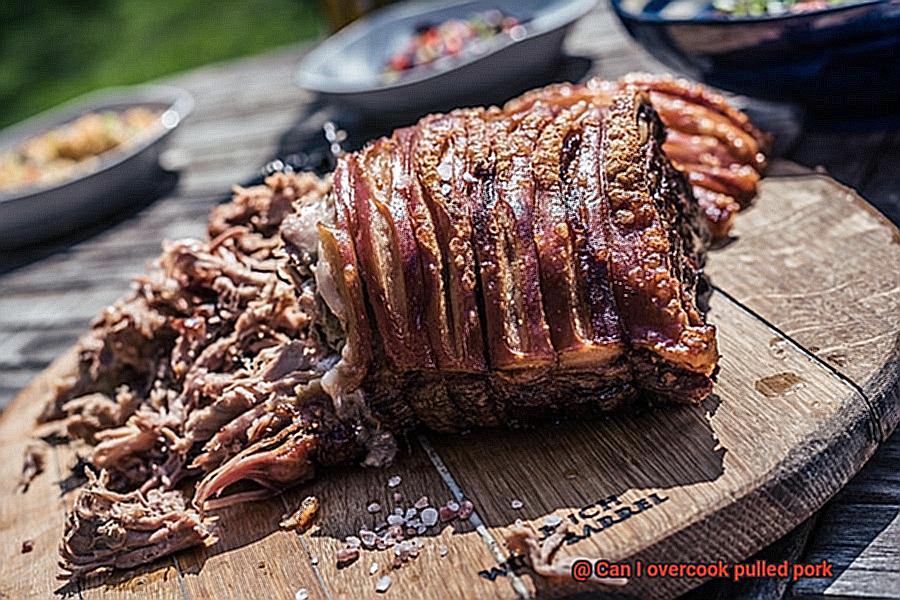
For perfectly cooked pulled pork, opt for smoking, braising, or slow cooking. These methods allow longer cooking times at lower temperatures, keeping your pork moist and tender without drying it out. Avoid increasing the heat or rushing the process – patience is key.
Marinating and Seasoning: Moisture is Key
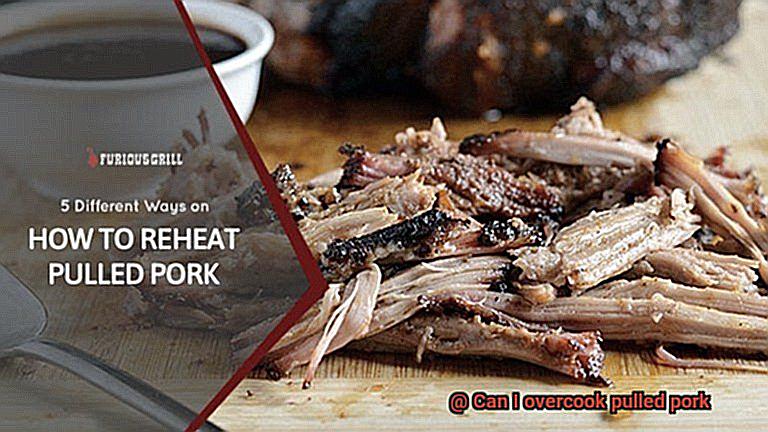
To add moisture and flavor to your pulled pork, marinate or season it before grilling. A flavorful marinade or spice rub enhances taste and traps moisture inside the meat, preventing dryness during cooking. Consider using a mop sauce or basting your pork with liquid periodically to maintain moisture and flavor.
Rest and Relaxation: Let the Juices Flow
After reaching the desired internal temperature, let your pulled pork rest. This step allows juices to redistribute throughout the meat, resulting in maximum tenderness and juiciness. Give it at least 15-20 minutes of resting time before shredding or slicing – don’t rush this step.
Wrapping Options: Moisture vs. Bark
Some grillers wrap their pork in foil or butcher paper to retain moisture and prevent overcooking. Keep in mind that wrapping may result in a softer bark or crust on the outside of the meat. Experiment with different wrapping techniques to find your preference.
How to Salvage Overcooked Pulled Pork
Attention, grill masters. We’ve all been there
that sinking feeling when you realize you’ve overcooked your pulled pork and ended up with dry, tough meat. But fear not. I’m here to share some expert tips and tricks on how to salvage that overcooked pulled pork disaster and transform it into a mouthwatering meal that will leave your taste buds begging for more. Let’s dive in.
Bring Back the Moisture Magic:
When pulled pork becomes dry, it’s in desperate need of a hydration boost. Give it a refreshing drink by mixing in some barbecue sauce, broth, or tangy apple cider vinegar. Pour this liquid gold over the meat and gently coat every succulent piece. Watch as the moisture seeps into the fibers, reviving the parched pork.
The Slow Cooker Savior:
If time is on your side, transfer the overcooked pulled pork into the warm embrace of a slow cooker or crockpot. Add an extra dose of liquid love like broth or barbecue sauce, then set it on low heat for a few hours. The slow and steady cooking process will work its magic, breaking down those stubborn fibers and transforming them into tender, juicy goodness.
Reheating with Tender Care:
In need of a quick fix? No worries. Reheat your overcooked pulled pork in a covered skillet or pan over low heat. To prevent further drying, add some luscious liquid like broth or barbecue sauce. Cover the pan with a lid to trap the steam, allowing the pork to heat slowly and tenderize as it warms up. Give it an occasional stir to ensure nothing sticks or burns.
Sandwiches to the Rescue:
Give your dry pulled pork new life by transforming it into delectable sandwiches or sliders that will make your taste buds sing. Toast some buns or rolls to golden perfection, then generously layer them with the overcooked pulled pork. Top it off with your favorite barbecue sauce, tangy coleslaw, zesty pickles, or any other tantalizing toppings your heart desires. The bread and accompaniments will work harmoniously to mask any lingering dryness and create a symphony of flavors.
Repurpose and Reinvent:
When all else fails, let your culinary creativity shine. Shred the overcooked pulled pork and use it as the star filling for tacos, burritos, or quesadillas. Mix it into pasta dishes, hearty soups, or comforting casseroles to infuse them with its irresistible taste and texture. The key is to combine the pork with other ingredients that will enhance its flavors and provide a moist backdrop for its redemption.
Benefits of Cooking Pulled Pork Low and Slow
Today, I am about to unveil a secret that guarantees tender, juicy, and flavor-packed pulled pork every single time. The key is cooking low and slow.
Now, you might be wondering what exactly “low and slow” means. It simply refers to the method of cooking the meat at a low temperature for an extended period of time. And let me tell you, this method holds some serious benefits.
First and foremost, cooking pulled pork low and slow ensures even cooking throughout the meat. The slow cooking process allows the heat to penetrate the meat gradually and uniformly, resulting in a tantalizingly tender and juicy texture that will make your mouth water. No more dry and tough pulled pork for you.
But that’s not all. Another major benefit of cooking low and slow is the development of a rich and complex flavor. The long cooking time allows all those delicious flavors from spices, herbs, and other seasonings to meld together with the meat, creating a symphony of taste that will have you dancing around your grill in pure delight.
And let’s not forget about texture. When you cook pulled pork low and slow, you have complete control over the final texture of the meat. By cooking at a low temperature over a longer period of time, you can easily achieve that melt-in-your-mouth tenderness that we all crave when it comes to pulled pork. Your taste buds will thank you profusely.
Now, I know what you’re thinking. What if I’m a beginner? What if I don’t have much experience with grilling or smoking meats? Well, here’s the best part – cooking pulled pork low and slow is actually a more forgiving method for beginners. The lower temperature and longer cooking time provide a wider margin for error, reducing the risk of overcooking or drying out the meat. So fear not, my novice grillers. You can experiment and learn without the anxiety of ruining your meal.
Different Types of Cookers for Pulled Pork
Embark on a mouthwatering journey through the various types of cookers used to create the most delicious pulled pork. From traditional smokers to convenient slow cookers, there’s a cooker out there to suit every taste and cooking style. Join us as we delve into the advantages and disadvantages of each type, helping you find your ideal method to achieve tender and flavorful pulled pork.
Smokers – Traditional Flavor Masters:
Smokers are the go-to choice for authentic, smoky pulled pork. These cookers use indirect heat and smoke from charcoal, wood pellets, or gas to slowly cook the meat to perfection. The result is tender, flavorful pork that melts in your mouth. The advantage of smokers lies in their ability to infuse the meat with rich smokiness while allowing for precise temperature control. However, they require more time and effort compared to other options.
Grills – Versatile and Convenient:
Grills can also be used to make mouthwatering pulled pork, although they may not provide the same level of smoky flavor as smokers. With direct heat and shorter cooking times, grills require close monitoring to avoid overcooking. Nevertheless, grills offer versatility and convenience, allowing you to achieve delicious pulled pork even in smaller spaces or on camping trips.
Slow Cookers – Set It and Forget It:
For busy individuals seeking a hassle-free cooking experience, slow cookers are the answer. Also known as crock-pots, these cookers use low and slow heat over several hours to transform tough cuts of pork into tender and juicy pulled pork. Slow cookers are perfect for those who prefer a “set it and forget it” approach.
Pressure Cookers – Quick and Tender:
If time is of the essence, consider using a pressure cooker. This modern marvel uses high-pressure steam to rapidly tenderize the meat, significantly reducing cooking time compared to other methods. However, precise timing and attention are required to avoid overcooking the pork.
Common Mistakes When Cooking Pulled Pork
Sink your teeth into succulent, flavorful, and perfectly cooked pulled pork by avoiding these common mistakes. We will guide you through the pitfalls to ensure your pulled pork always impresses.
Overcooking the pork:
Invest in a trusty meat thermometer and cook your pork to an internal temperature of 195-205°F (90-96°C). This breaks down collagen, resulting in melt-in-your-mouth tenderness.
Not using a marinade or rub:
Enhance flavor and tenderize the meat with a marinade or rub. Generously coat the pork and let it marinate for hours or overnight.
Not allowing enough time for resting:
Patience is key. Let your cooked pork rest for at least 30 minutes before shredding. This redistributes juices, resulting in a juicier and more flavorful final product.
Shredding the pork too soon:
Resist the temptation to dive right in. Allow the pork to cool before shredding. This prevents burnt fingers and ensures even shredding.
Not using the right cut of pork:
Choose well-marbled cuts like pork shoulder or Boston butt. Their fat content keeps the meat moist during cooking, resulting in a tender and flavorful result.
Not properly seasoning the meat:
Season liberally with salt, pepper, and your favorite spices or herbs. Ensure every inch of the pork is well-coated for maximum flavor.
j-gBbNgfDMI” >
Conclusion
Yes, it is possible to overcook pulled pork.
When you leave it on the heat for too long, the meat becomes dry and tough, losing its juicy tenderness. Nobody wants to sink their teeth into a piece of pork that feels like chewing on shoe leather.
So, be mindful of your cooking time and temperature to ensure that your pulled pork comes out just right – succulent, flavorful, and melt-in-your-mouth delicious.

